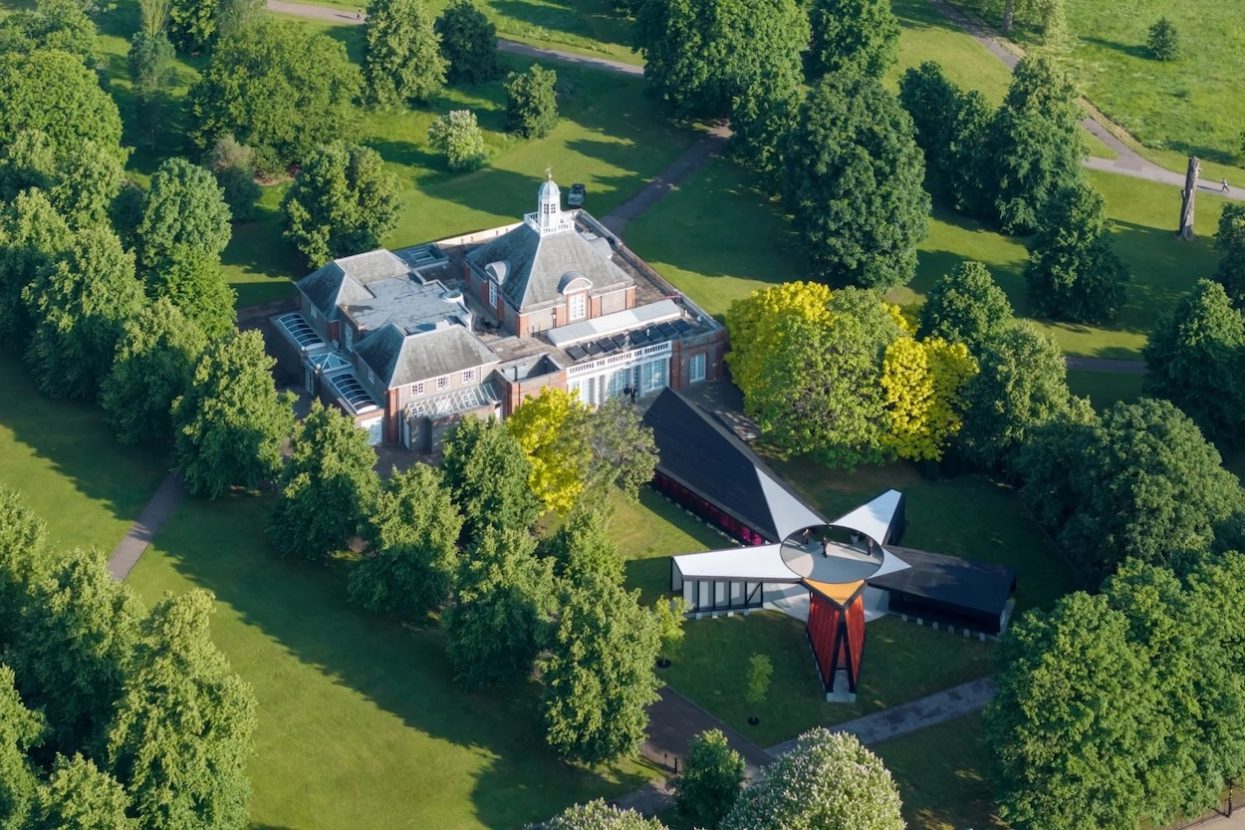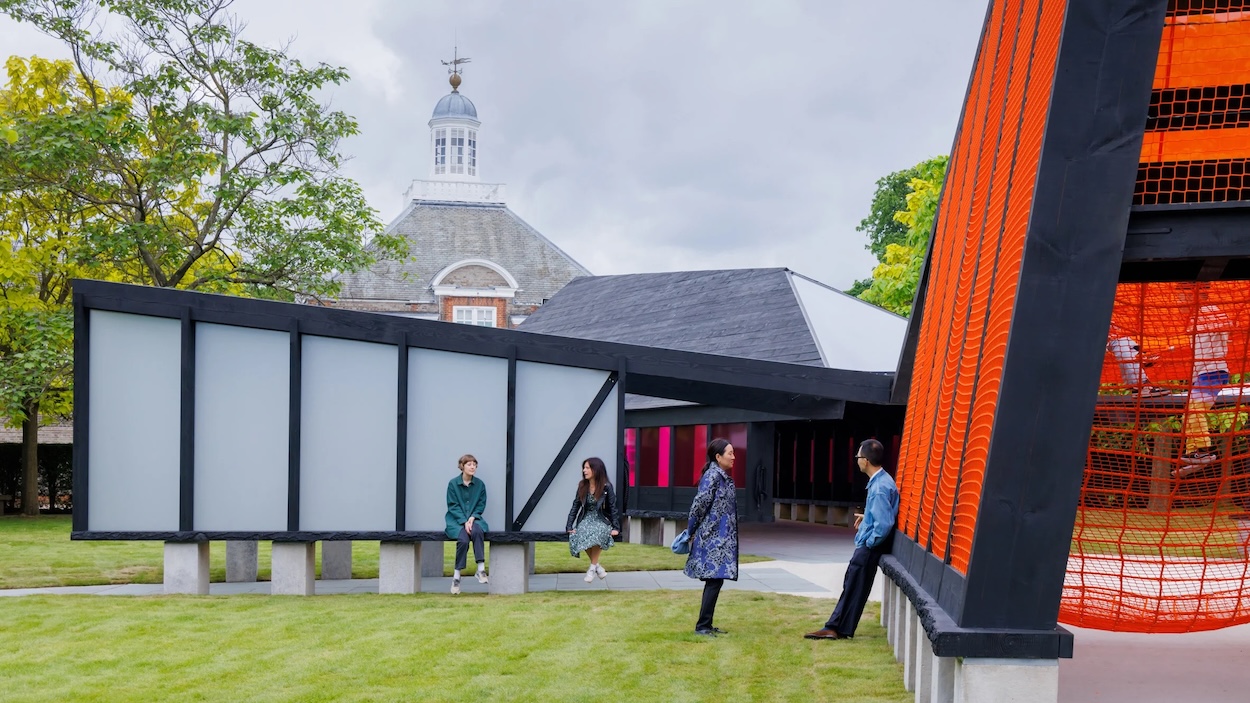Minsuk Cho and his firm Mass Studies unveiled their design for the 23rd annual Serpentine Pavilion this week, a structure of “five islands” inspired by madangs, the central courtyards typical of traditional Korean houses where everyday activities and communal rituals take place. Archipelagic Void also pays tribute to the Korean architect’s predecessors who’ve put their stamp on the pavilion over the years: Frida Escobedo, Bjarke Ingels, Sou Fujimoto, and the late Zaha Hadid all receive nods, as does Buckminster Fuller, whose geodesic dome was considered a symbol of “utopian living.” Throughout the structures, Cho references the circles, rectangles, and freeforms of past commissions.
Each wing of Archipelagic Void serves a different purpose: the Gallery will host a sound installation by musician and composer Jang Young-Gyu; artist Heman Chong and archivist Renée Staal’s The Library of Unread Books encourages visitors to contribute one of their own to the collection; Tea House nods to the Serpentine South building’s origins; the interactive, pyramid-like Play Tower is outfitted with a bright orange netscape for visitors to climb; and the Auditorium functions as a space for performances and talks. The pavilion is open to the public through Oct. 27.
The chaos of the architecture mellows into stasis in the central void, which Cho likens to the experience of eating a Korean meal. “You know, you go to a French restaurant and they bring you all these many courses over a long period,” he tells the Financial Times. “In Korea, everything happens at once. It’s a collective experience, but you choose your own foods—something cold, something spicy, something sweet.”


